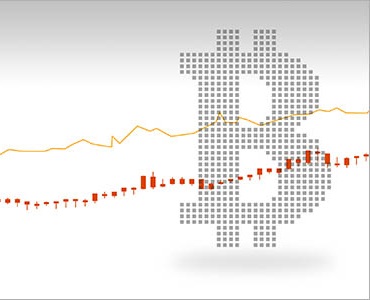I sat down with global leading blockchain expert, Dr. Merav Ozair, of Rutgers Business School to get the latest insights on the hottest digital asset, NFTs.
If you’ve been paying attention to market news lately, non-fungible tokens (NFTs) and blockchain technology are dominating headlines. There is always something new and something changing. As tax and accounting professionals, your clients turn to you for advice on how to navigate these modern financial trends and changes. Understanding NFTs is a necessary step to understanding how to help your clients and how to adapt your practice.
I sat down with Rutgers FinTech professor and a leading global blockchain expert, Dr. Merav Ozair, to get the inside scoop on NFTs and break down how they are impacting the tax and accounting profession.
Step one, what is a fungible token? When an item is fungible it is interchangeable and, in some cases, also indistinguishable. Take two one-dollar bills, for example. They are fungible. As Dr. Ozair explains, “If I go to Starbucks and I give them this dollar bill or that dollar bill, they don’t care right? This is what fungible means because it is interchangeable. However, the two are distinguishable because they have serial numbers – this is how the Central Bank tracks them. In this case, the two one-dollar bills are interchangeable but not indistinguishable.”
So, with the understanding of fungibility, we know that a nonfungible token must be unique. It cannot be interchanged, and it is distinguishable. In the physical world, this can be seen very clearly. A one-of-a-kind painting is non-fungible, it is unique. Dr. Ozair compares it to the days of bartering. For instance, let’s say you wanted to trade a cow for two goats. Each animal is unique, but they are assigned a value that can be used for trading and are not simply interchangeable. Their uniqueness plays a special role in their trade and owner’s perception of its value.
But that is the physical world. What about the tokenization world? Dr. Ozair says, “As for the tokenization and crypto world, you can think about bitcoin as being the equivalent of the one-dollar bill. It is interchangeable but it’s not indistinguishable because it has a unique hash number (the analogous to a serial number)” In the tokenization world when something is unique, it has its own entity.
Let’s say you want to buy a Picasso painting. There is a very real possibility (and perhaps, even a likely event) someone could be trying to sell you a forgery. How can you know that it is authentic? This is where the power of non-fungible tokens (NFTs) comes into play. If the painting were to come with a nonfungible token, you could be confident that it is authentic. It’s uniqueness and originality is sealed and certified. “That’s what the power of NFT is. It authenticates each and every asset that you create digital, or even non-digital,” says Dr. Ozair. An NFT is not physical, it is a digital asset (or a token) that you would store in a virtual wallet with other tokens like cryptocurrency.
NFTs run on a blockchain. This means that they cannot be edited or changed. Once it is created, it exists forever. A key feature of blockchain technology is decentralization. Bitcoin also runs on a blockchain. It allows an individual to send bitcoin to another individual, no middleman or bank required. Here’s an easy way to think about it: blockchain is to NFTs as Apple’s IOS is to smartphone apps. Apple uses iOS as a platform to build all kinds of applications. Android also has a platform to develop apps. The apps on a phone are centralized, the company that made the phone controls the platform it is on. The only difference here is that blockchain is decentralized. Ethereum blockchain, is the first blockchain protocol, which took the concepts of a centralized applications platform to create a decentralized applications (i.e., dapps) platform, not controlled by any centralized company. NFT is one type of application on a blockchain.
You may be asking, “when did this concept of NFTs originate? I feel like it came out of nowhere!” They are relatively new. The concept has been around since November of 2017. Around that time the crypto market boomed, and then burst. NFTs were being created, but they were far less popular than they are today. Now, they’ve taken front and center in the crypto world. You may have heard of Beeple’s digital artwork selling for a record $63.9 million or Twitter CEO, Jack Dorsey, selling his first tweet for $2.9 million. These, and thousands of other digital asset sales, are taking place in the form of NFTs.
NFTs could also be used in daily life. You could NFT a social media post and immediately monetize it. Dr. Ozair explains, “You can take whatever short video that you created on your phone like cooking tips or tricks, and NFT it. And everyone can do that. So now every hobby that you have and every bit of knowledge that you attain, can be translated quite quickly into monetary value. I think this has the potential to democratize society, as something that everyone can participate in and create another source of income, very quickly”.
So NFTs can be a part of daily life. Great. But how will NFTs and blockchain impact the tax and accounting world? “Blockchain is basically a ledger. What is accounting? Accounting is all about ledgers,” says Dr. Ozair. “With blockchain, you have a technology, which simplifies, and facilitates all the processes of everything that is happening – hence, makes processes more efficient. You may have information on accounts here or there, in several different places, but if you put everything on a blockchain, that completely changes everything and makes accounting far more efficient.”
“Think about Bitcoin for example. From an accounting perspective, Bitcoin is already a ledger, so all that information is already there. You know exactly who transferred to whom and when and where and all of that,” Dr. Ozair explains. “It provides a lot of what an account currently provides. You can’t amend it. You can’t alter it. You can’t do anything. Once it’s recorded it’s there forever. From that perspective I think it’s better for taxes, the IRS, or everybody else, that everything will be reported on a blockchain because it will be very easy to, I would say, follow the money. Basically, each transaction will be accounted for, and transparent for everyone to view, track and trace… it definitely has the potential to make things for government and the accounting profession much easier so they can focus their attention elsewhere in their agency or profession, respectively.”
Dr. Ozair’s insight into the world of NFTs and blockchain technology helps paint the picture of what we can expect in the future of our tax and accounting world. We need to understand this technology and shift our firm’s mindsets to better serve our clients in this new and evolving space.
Also be sure to check out forthcoming topical articles on NFTs, by Dr. Ozair, in Thomson Reuters Journal of Taxation, Journal of Estate Planning and Journal of International Taxation.
For more information on Cryptocurrency, we invite readers to download our recent whitepaper:

White paper
Catching up with cryptocurrency: What tax and accounting professionals need to know
Read white paper ↗






